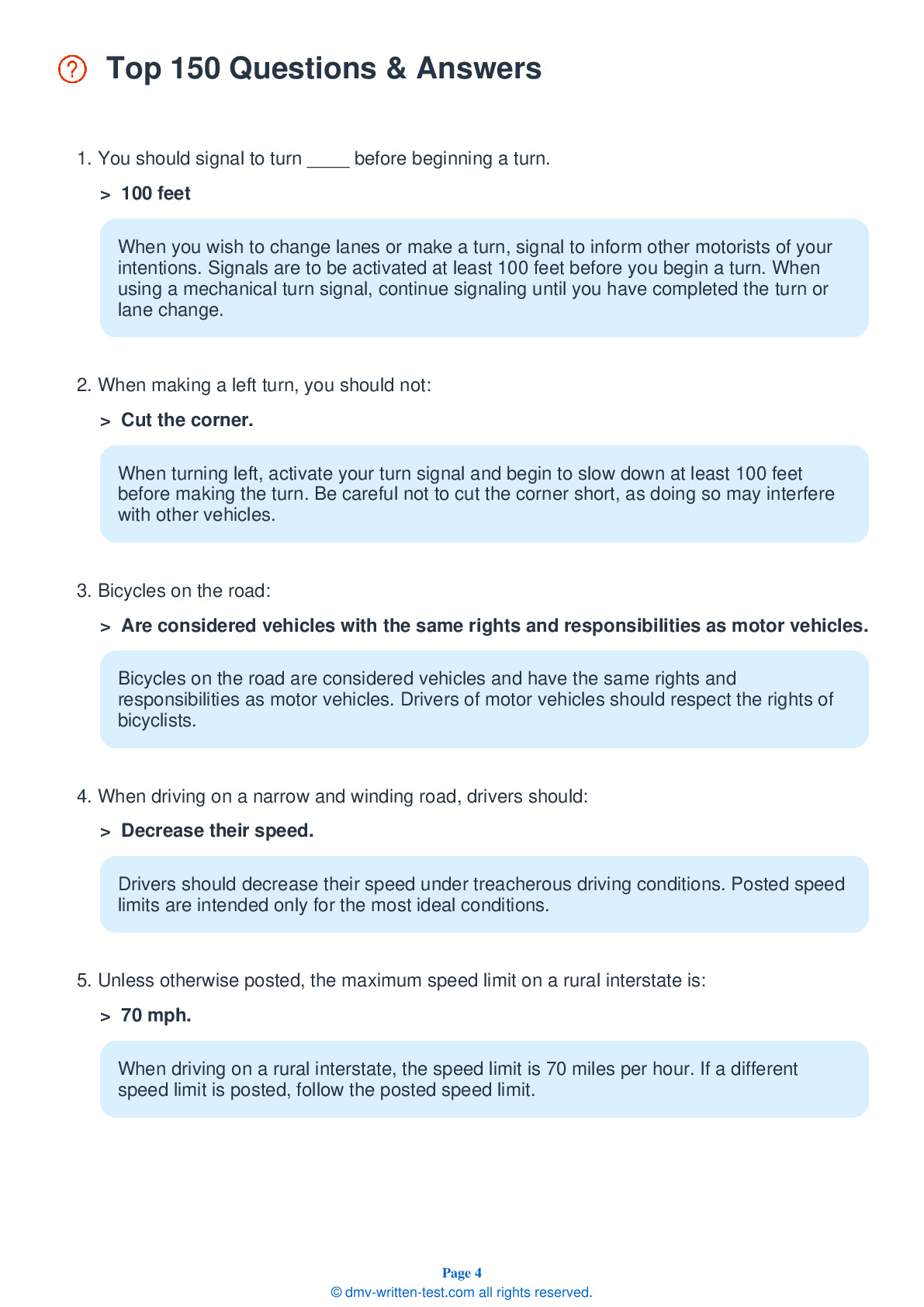2026 Mississippi Permit Test 22
The following questions are from real DMV written tests. These are some of the actual permit questions you will face in Mississippi. Each permit practice test question has three answer choices. Select one answer for each question and select "grade this section." You can find this button at the bottom of the drivers license quiz. For a complete list of questions and answers for Mississippi please visit https://cheat-sheets.dmv-written-test.com/en/mississippi/car.
Number of Tests
Number of Question
Passing Score
1. At intersections, crosswalks, and railroad crossings, you should always:
Explanation
Any time you come to a place where people may cross or enter your path, or where one line of traffic meets another, you should look to the left and right sides of your vehicle to make sure no one is coming.
2. A large truck is ahead of you and is turning right onto a street with two lanes in each direction. The truck:
Explanation
When a vehicle makes a turn, the rear wheels follow a shorter path than the front wheels. The longer the vehicle, the bigger the difference between the paths of the front and rear wheels. Therefore, long trucks often have to swing wide to complete a right turn.
3. It is illegal for a person 21 years of age or older to drive with a minimum blood alcohol concentration (BAC) of:
Explanation
For drivers age 21 or older, it is illegal to operate a motor vehicle with a blood alcohol concentration (BAC) of 0.08 percent or higher. Driving while under the influence of alcohol is not only illegal, but dangerous.
4. At intersections with a "Yield" sign, you must:
Explanation
At a yield sign, you must slow down or stop, if necessary, and give the right-of-way to crossing or merging vehicles. Yield the right-of-way to any cross traffic that is close enough to cause conflict.
5. When driving at night, you should:
Explanation
Driving at night is more hazardous than daytime driving because the lowered visibility makes it difficult to judge speed, distances, and other potential hazards. Increase your following distance to help prevent a potential collision if the vehicle in front of you should stop abruptly. Use your headlights when driving at night, following the rules for proper usage of high beams and low beams.
6. If a tire blows out, you should:
Explanation
If a tire suddenly blows out while you are driving, hold the steering wheel tightly and keep the vehicle going straight.You should slow down gradually, taking your foot off the gas pedal and using the brakes lightly. Do not stop on the road if at all possible. Pull off the road in a safe place.
7. You enter a designated turn lane to make a left turn at an upcoming intersection. There is oncoming traffic. You should:
Explanation
When making a left turn, you should always begin signaling about 100 feet before the turn. You should keep your front wheels aiming straight ahead until it is safe to start your turn. This ensures that you will not be pushed into oncoming traffic if another vehicle hits you from behind.
8. When driving at night, you should:
Explanation




